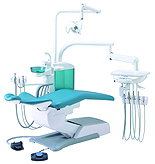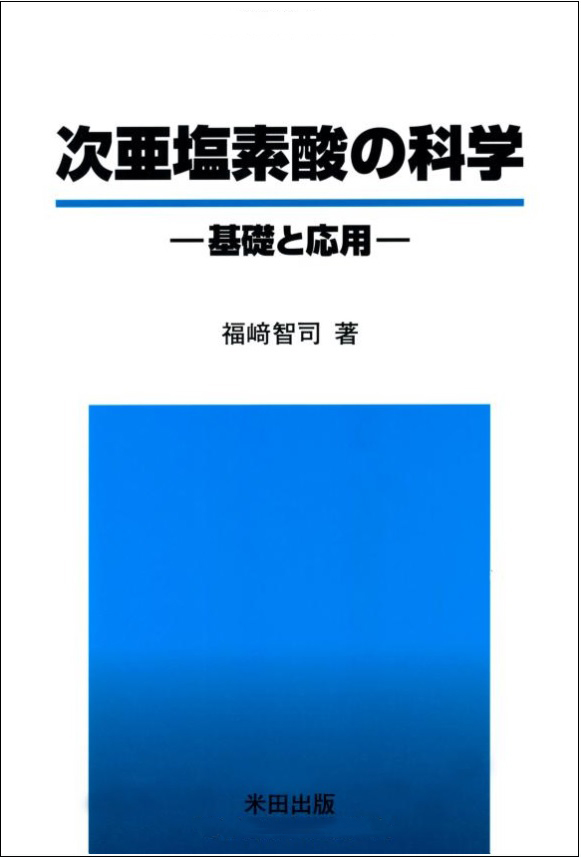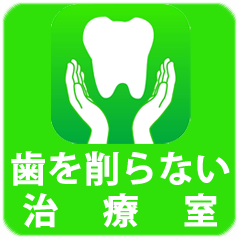
【抗菌作用のある洗口液を用いた術前洗口が歯科における院内飛沫感染を減少させる可能性が高い】という内容の海外の研究論文に基づき、患者さんが歯科医院での治療前に、抗菌作用のある口腔洗口液である次亜塩素酸電解除菌水で洗口(うがい)を行うと、ウイルス等の院内飛沫感染リスクが低くなる可能性が考えられます。

和文参考タイトル:抗菌作用のある洗口液を用いた術前洗口が歯科におけるエアロゾル中の生菌を減少に導く有効性
この二重の盲検、比較的、交差的に行う臨床試験では、典型的な歯科処置中に発生するエアロゾル中の回収可能な生菌のレベルに対して、抗菌作用のある洗口液による術前洗口の効果を評価した。18名が実験に参加した。
口腔内清掃を24時間を中止した後、被験者は無作為に選択され、片顎10分間の超音波スケーリングを受けた後、洗口されていない反対顎を対象群とした。
次に、抗菌作用のある薬液、または比較の洗口液を無作為に割り当て、20 mlで30秒間洗口し、その後に片顎(実験顎)に超音波スケーリングを10分間行った。それぞれ10分間のスケーリング中、エアロゾル化された細菌は、改造された真空エアサンプリング装置を使用して滅菌フィルター上に収集された。 無菌フィルターに収集された細菌は、フィルターをトリプチケースソイ寒天培地上で室温37°Cで24〜72時間培養され、得られたコロニー形成単位(CFU)を計測することで定量化した。
予備実験では、エアロゾル中の回収方法も残留消毒剤の洗口薬もフィルターから回収された生菌数に悪影響を与えないことが確認された。抗菌作用のある薬液での洗口は、洗口しなかった対照群と比較して、回収可能なCFUが94.1%減少したのに対し、対照群は33.9%減少した。洗口液と比較対象の差は統計学的に有意であった。(P <.001)
この研究は、抗菌作用のある薬液による前処置としての洗口は、超音波スケーリング中に発生するエアロゾルの微生物含有量を大幅に減らすことができ、院内での感染管理方法として潜在的な可能性があることを示した。
This double‐blind, controlled, cross‐over, clinical study evaluated the effect of preprocedural rinsing with an antiseptic mouthrinse on the level of recoverable viable bacteria in an aerosol generated during a typical dental procedure. Eighteen subjects participated. Following 24 hours of abstention from all oral hygiene procedures, subjects received a 10‐minute ultrasonic scaling of a randomly selected one‐half of their mouth which served as the unrinsed control. They were then randomly assigned either antiseptic mouthwash or a control rinse and rinsed with 20 ml for 30 seconds, after which the remaining half mouth (experimental side) was scaled ultrasonically for 10 minutes. During each 10‐minute scaling period aerosolized bacteria were collected on a sterile filter using a modified vacuum air‐sampling device. Microbes captured on the sterile filter were quantitated by overlaying the filters onto trypticase soy agar, incubating the filters aerobically at 37°C for 24 to 72 hours, and counting the resulting colony forming units (CFU). Preliminary experiments had confirmed that neither the collection method nor residual antiseptic mouthwash in the aerosol adversely affected the number of viable bacteria recovered from the filter. Rinsing with the antiseptic mouthwash produced a 94.1% reduction in recoverable CFUs compared to the non‐rinsed control, while the control rinse produced a 33.9% reduction. The difference between the mouthwash and control was statistically significant (P <.001). This study indicates that preprocedural rinsing with an antiseptic mouthwash can significantly reduce the microbial content of aerosols generated during ultrasonic scaling and may have potential in‐office use as part of an infection control regimen. J Periodontol 1992; 63:821–824.


